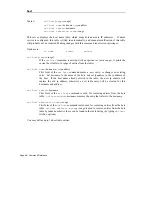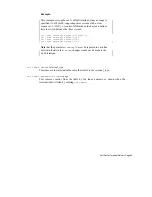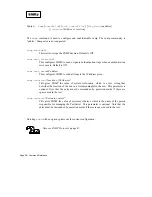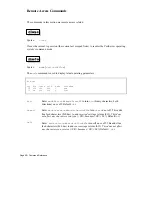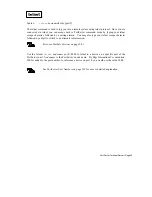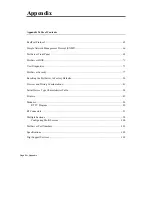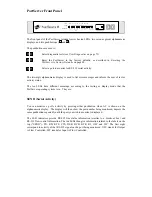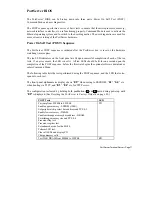
Page 56
Ÿ
Command Reference
users
Syntax:
set users
[
range=
range]
set users name=
username [
passwd=on
|
off
] [
auto=on
|
off
]
[
dest
=
IPaddress] [
dport=
tcp_port#]
set users rmuser=
username
set users rmuser=on range=
range
set users newname=
newusername
name=
oldusername
This command sets or displays the user name table. Making changes with this command
requires root privileges. More than one option can be included in a command. Options are:
auto
dport
dest
name
newname
passwd
range
rmuser
save
set users
[
range=
range]
If the
set
users
command is entered with no options (or just a range), it displays
the current users table (or a range of entries from the table).
set users name=
username [
passwd=on
|
off
] [
auto=on
|
off
]
[
dest=
IPaddress] [
dport=
tcp_port#]
This form of the
set
users
command makes a new user entry, or changes an
existing user entry. Set username to the name of the user. If the name matches an
existing entry, that entry will be modified by this command
otherwise a new table
entry will be created. Setting
passwd=on
will require the user to enter a password
when logging in; setting
passwd=off
allows the user to log in without a password.
If a new user that requires a password is created, the initial password is the same as
the user name.
•
If
auto
is set to
off
, the user username is presented with the PortServer com-
mand line after logging in.
•
If
auto
is turned
on
, the user username will always be connected to the
destination specified by
dest=
IPaddress and
dport=
tcp_port#, completely
bypassing the PortServer command shell. (IPaddress is the IP address of the
host that this user should automatically be connected to, and tcp_port# is the
host TCP port that the connection should be made to:
23
means telnet,
513
means rlogin; the default
0
is mapped to rlogin. (Check your operating system
documentation for service numbers.)





